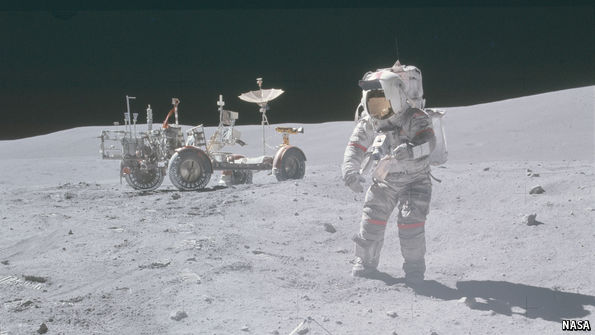How to solve the lunar dust problem

“PICKING up some dust.” So said Buzz Aldrin on July 20th 1969, as he and Neil Armstrong descended towards the lunar surface. It is not the most famous quote from that day. But the lunar dust kicked up by Aldrin’s and Armstrong’s descending spacecraft would go on to become a serious, if under-appreciated, problem for all of the Apollo astronauts.
Lunar dust consists of rock pulverised to the consistency of talcum powder by micrometeoroid impacts. The fragments are sharp, and because there is no weather on the Moon, and therefore no erosion, they stay that way. At the same time, the solar wind bombards the dust with charged particles from the sun, giving it a static charge that makes it cling to anything it touches.
The jagged dust fragments blackened spacesuits, causing them to absorb too much heat. They tore tiny leaks in joint seals, resulting in pressure leaks and risking total failure of the suits. They scratched visors, hindering visibility, and caked batteries, making them overheat. Tramped back into the spacecraft, they escaped into the air, from where the astronauts had little choice but to breathe them in and risk any…Continue reading
Source: Economist




